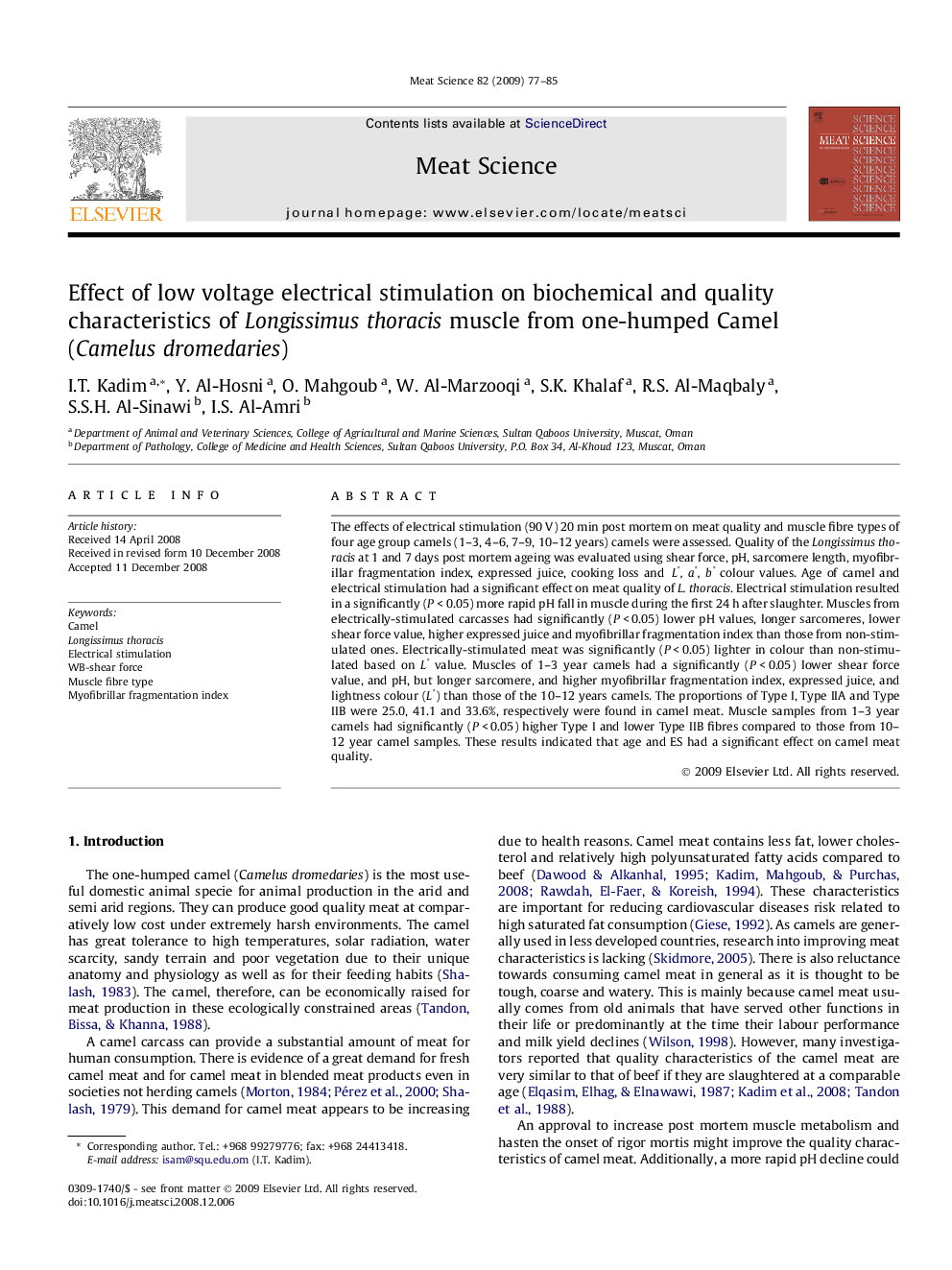| کد مقاله | کد نشریه | سال انتشار | مقاله انگلیسی | نسخه تمام متن |
|---|---|---|---|---|
| 2451099 | 1109671 | 2009 | 9 صفحه PDF | دانلود رایگان |

The effects of electrical stimulation (90 V) 20 min post mortem on meat quality and muscle fibre types of four age group camels (1–3, 4–6, 7–9, 10–12 years) camels were assessed. Quality of the Longissimus thoracis at 1 and 7 days post mortem ageing was evaluated using shear force, pH, sarcomere length, myofibrillar fragmentation index, expressed juice, cooking loss and L∗, a∗, b∗ colour values. Age of camel and electrical stimulation had a significant effect on meat quality of L. thoracis. Electrical stimulation resulted in a significantly (P < 0.05) more rapid pH fall in muscle during the first 24 h after slaughter. Muscles from electrically-stimulated carcasses had significantly (P < 0.05) lower pH values, longer sarcomeres, lower shear force value, higher expressed juice and myofibrillar fragmentation index than those from non-stimulated ones. Electrically-stimulated meat was significantly (P < 0.05) lighter in colour than non-stimulated based on L∗ value. Muscles of 1–3 year camels had a significantly (P < 0.05) lower shear force value, and pH, but longer sarcomere, and higher myofibrillar fragmentation index, expressed juice, and lightness colour (L∗) than those of the 10–12 years camels. The proportions of Type I, Type IIA and Type IIB were 25.0, 41.1 and 33.6%, respectively were found in camel meat. Muscle samples from 1–3 year camels had significantly (P < 0.05) higher Type I and lower Type IIB fibres compared to those from 10–12 year camel samples. These results indicated that age and ES had a significant effect on camel meat quality.
Journal: Meat Science - Volume 82, Issue 1, May 2009, Pages 77–85